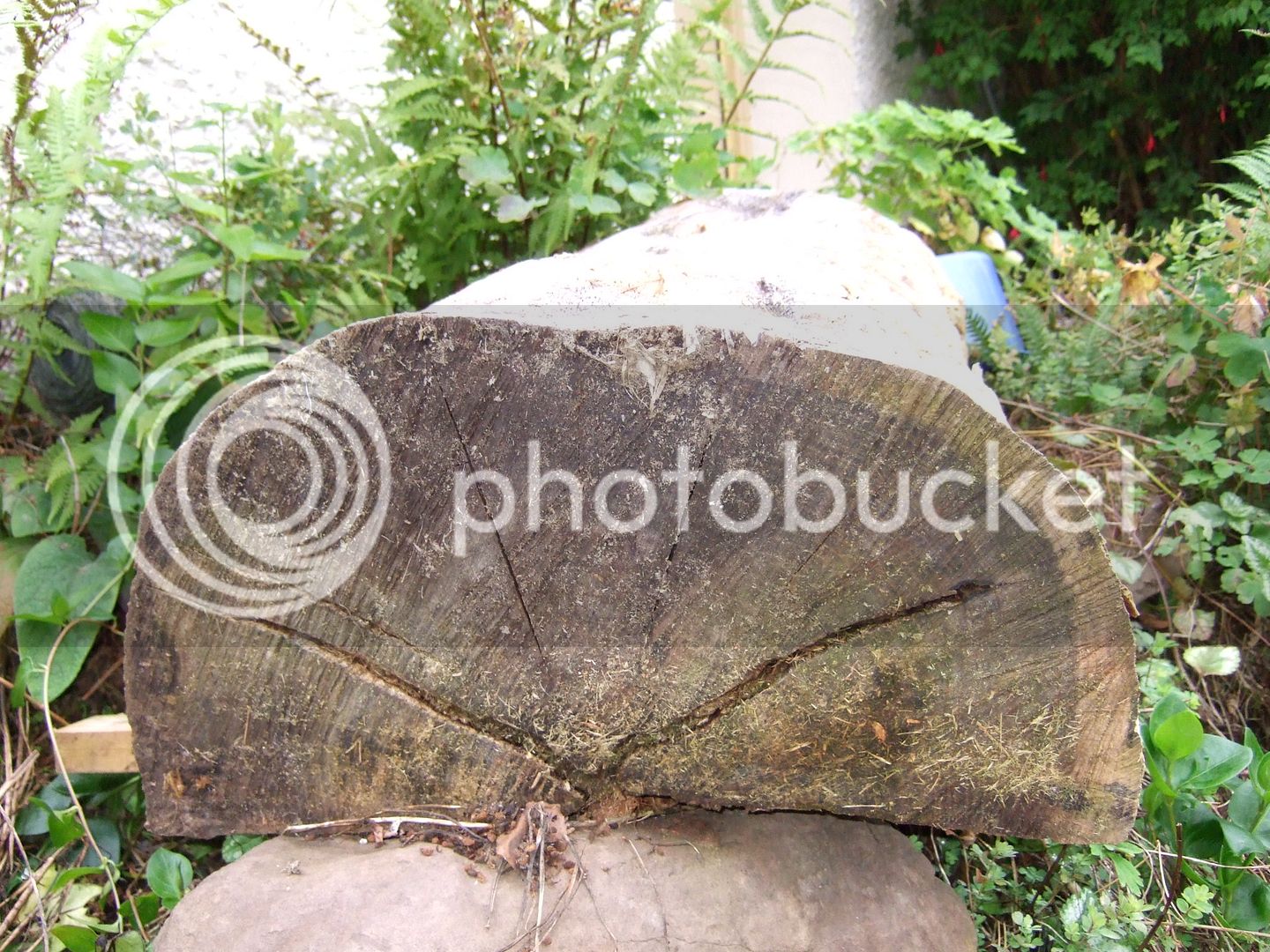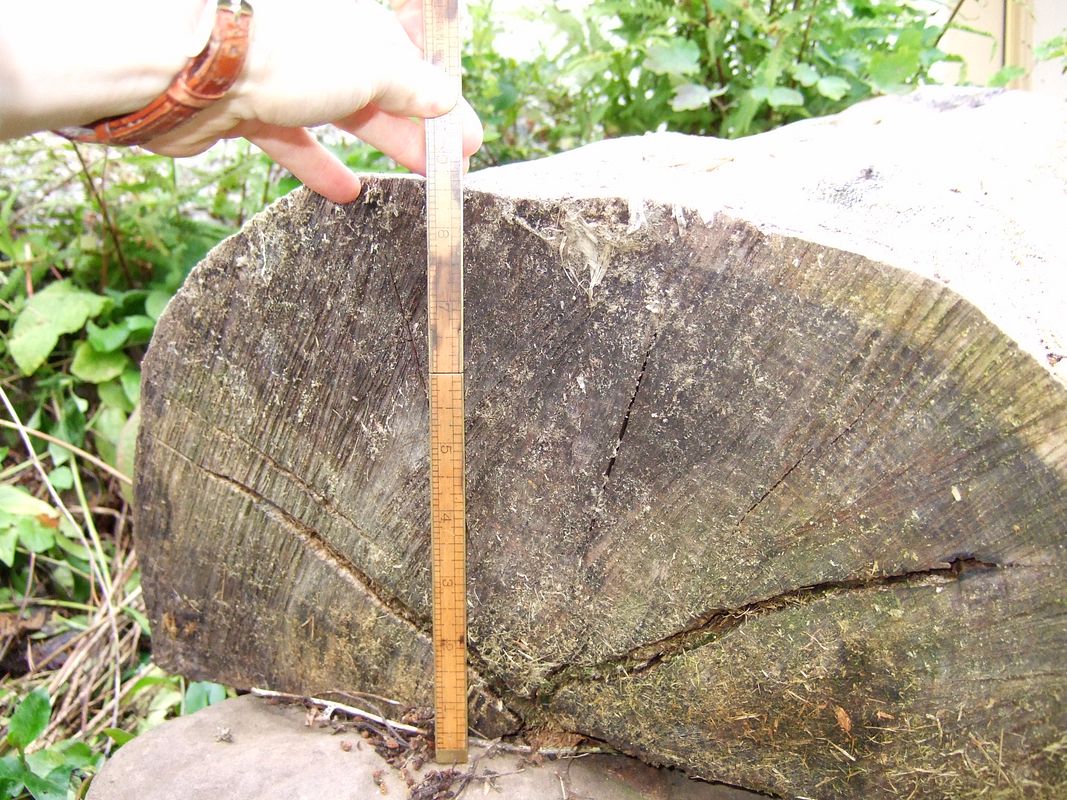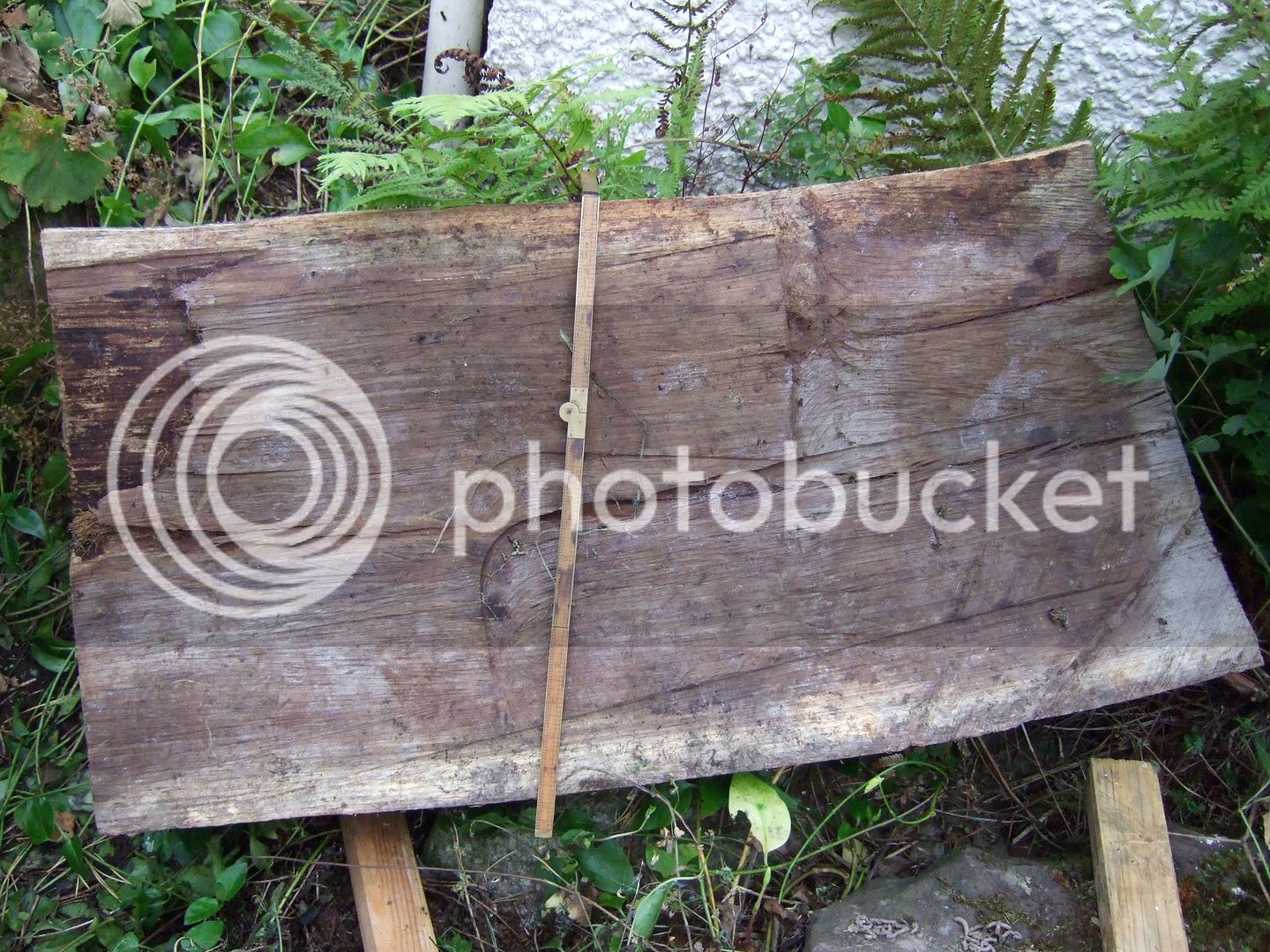DuncanA
Established Member
I've got a largeish chunk of Laburnum which has been lying in my parents garden for too long now (at least three years). The core of the tree did have some sort of rot - a sort of mossy type stuff filling cracks on the inside, but I figured I might be able to get a few lengths of usable wood from it, or if nothing else good fun and experience learning what (not) to do. I'm not expecting any large beautiful planks but enough to make the odd little box or trinket would be nice - even if riven wood does mean I loose some of the beauty of the grain.
We had the tree surgeon split the trunk into two parts, the smaller half I've kept under shelter while the larger bit has sat on some sticks to keep it off the ground with it's sap-wood (and more sacrificial) side up to the elements and the bark stripped off. The plan was to see if I could split it into some boards that I might be able to rough down into usable planks of wood using a froe (Roy Underhill/Peter Follansbee style). I did look into places that would saw it up but considering the rot and the cost of transporting it and getting it sawn didn't seem worthwhile for such a small yield of usable wood.
The radius is about 8 - 9in. and the length maybe 3 ft.
So, now I'm finally getting round to dealing with it I have a couple of questions about froes.
1) Is a froe still the right tool for the job considering the wood has spent so long drying out and is no longer really green. Does the species influence things here too?
2) What size froe do I need? At Woodsmith (http://woodsmithexperience.co.uk/shop/category/froes/) I was looking at the Ray Iles large froe (aside: would I want the standard or premium?) which they say is good for medium duty work, but that the Gransfors Burks would be better for heavy duty work. I've also come across the Ray Iles XL froe (http://www.oldtools.free-online.co.uk/shop/froes.html) which I assume may serve for heavy duty work? I'm not sure if this job is medium or heavy duty - the priority is to get the right tool for the job, but I'd also like to buy British if I can and get a tool that will be versatile for other jobs in the future.
So, how would you recommend I get some pleasure and wood from this lump?



We had the tree surgeon split the trunk into two parts, the smaller half I've kept under shelter while the larger bit has sat on some sticks to keep it off the ground with it's sap-wood (and more sacrificial) side up to the elements and the bark stripped off. The plan was to see if I could split it into some boards that I might be able to rough down into usable planks of wood using a froe (Roy Underhill/Peter Follansbee style). I did look into places that would saw it up but considering the rot and the cost of transporting it and getting it sawn didn't seem worthwhile for such a small yield of usable wood.
The radius is about 8 - 9in. and the length maybe 3 ft.
So, now I'm finally getting round to dealing with it I have a couple of questions about froes.
1) Is a froe still the right tool for the job considering the wood has spent so long drying out and is no longer really green. Does the species influence things here too?
2) What size froe do I need? At Woodsmith (http://woodsmithexperience.co.uk/shop/category/froes/) I was looking at the Ray Iles large froe (aside: would I want the standard or premium?) which they say is good for medium duty work, but that the Gransfors Burks would be better for heavy duty work. I've also come across the Ray Iles XL froe (http://www.oldtools.free-online.co.uk/shop/froes.html) which I assume may serve for heavy duty work? I'm not sure if this job is medium or heavy duty - the priority is to get the right tool for the job, but I'd also like to buy British if I can and get a tool that will be versatile for other jobs in the future.
So, how would you recommend I get some pleasure and wood from this lump?







